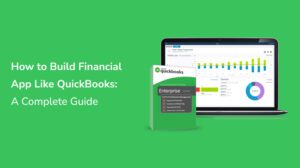In the ever-expanding landscape of financial management tools, two prominent platforms often stand out: Plaid vs Mint.
Both offer robust features designed to help users gain control over their finances, track spending, and plan for the future. But when it comes down to choosing between the two, which one reigns supreme?
Let’s delve into the details and explore the strengths and weaknesses of each.
Understanding Plaid

Plaid is a financial services company that acts as a bridge between financial institutions and developers. Its primary focus is on providing tools and infrastructure for developers to build innovative financial applications.
Plaid offers a suite of APIs that enable developers to access banking data securely, streamline transactions, and enhance user experiences within their applications.
Plaid Developers: Empowering Innovation
For developers, Plaid is a goldmine of resources. Its developer-friendly APIs simplify the process of integrating financial data into applications, allowing developers to focus on building innovative solutions without worrying about the intricacies of banking integrations.
Plaid developers can create a wide range of financial software, from budgeting apps to investment platforms, with ease.
Connect with us for Fintech Development Needs
Trusted by companies like Plaid, Yodlee, Codat.
Plaid API Integrations: Seamless Connectivity
Key strengths lie in extensive Plaid API integrations. By connecting with thousands of financial institutions worldwide, Plaid ensures that users can link all their accounts, including checking, savings, credit cards, and investment accounts, within a single platform.
This seamless connectivity provides users with a comprehensive view of their financial health, enabling them to make informed decisions.
Exploring Mint

Mint, on the other hand, is a personal finance management platform owned by Intuit. It offers a user-friendly interface and a range of features designed to help individuals track their spending, set budgets, and achieve their financial goals.
Mint aggregates financial information from various accounts and provides insights into users’ spending habits and financial trends.
Simplifying Money Management with Mint
Mint’s appeal lies in its simplicity and accessibility. The platform caters to users who seek a straightforward solution for managing their finances without delving into the complexities of financial software.
With Mint, users can easily track their income and expenses, categorize transactions, and set financial goals, all within a user-friendly interface.
Connect with us for Fintech Development Needs
Trusted by companies like Plaid, Yodlee, Codat.
Plaid vs Mint: The Verdict
When comparing Plaid vs Mint, it’s essential to consider the specific needs and preferences of individual users.
Plaid excels in its developer-centric approach, making it the preferred choice for developers looking to create innovative financial software.
Its robust APIs and extensive integrations ensure seamless connectivity and empower developers to build sophisticated financial applications.
Mint, on the other hand, caters more to the average consumer, offering a simple yet effective solution for managing personal finances.
Its user-friendly interface and comprehensive features make it ideal for individuals who prioritize ease of use and accessibility.
Conclusion
In conclusion, choosing between Plaid vs Mint ultimately depends on your priorities. If you’re a developer seeking to build cutting-edge financial applications, Plaid offers the tools and resources you need to succeed.
However, if you’re an individual looking for a hassle-free way to manage your finances, Mint provides a user-friendly platform with all the essential features.
Whichever option you choose, both Plaid vs Mint are valuable tools in helping you take control of your financial future.
Happy Plaid and Mint Development!!
Connect with us for Fintech Development Needs
Trusted by companies like Plaid, Yodlee, Codat.





